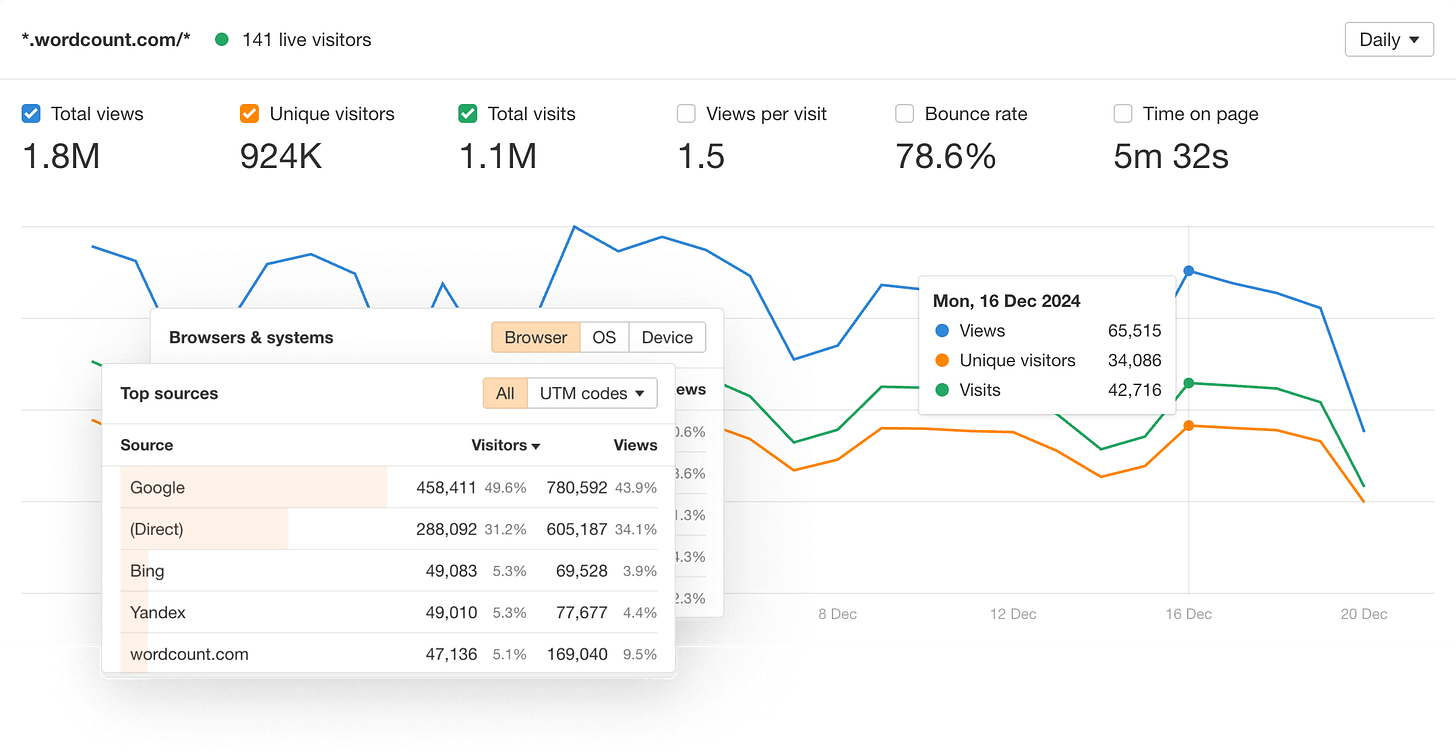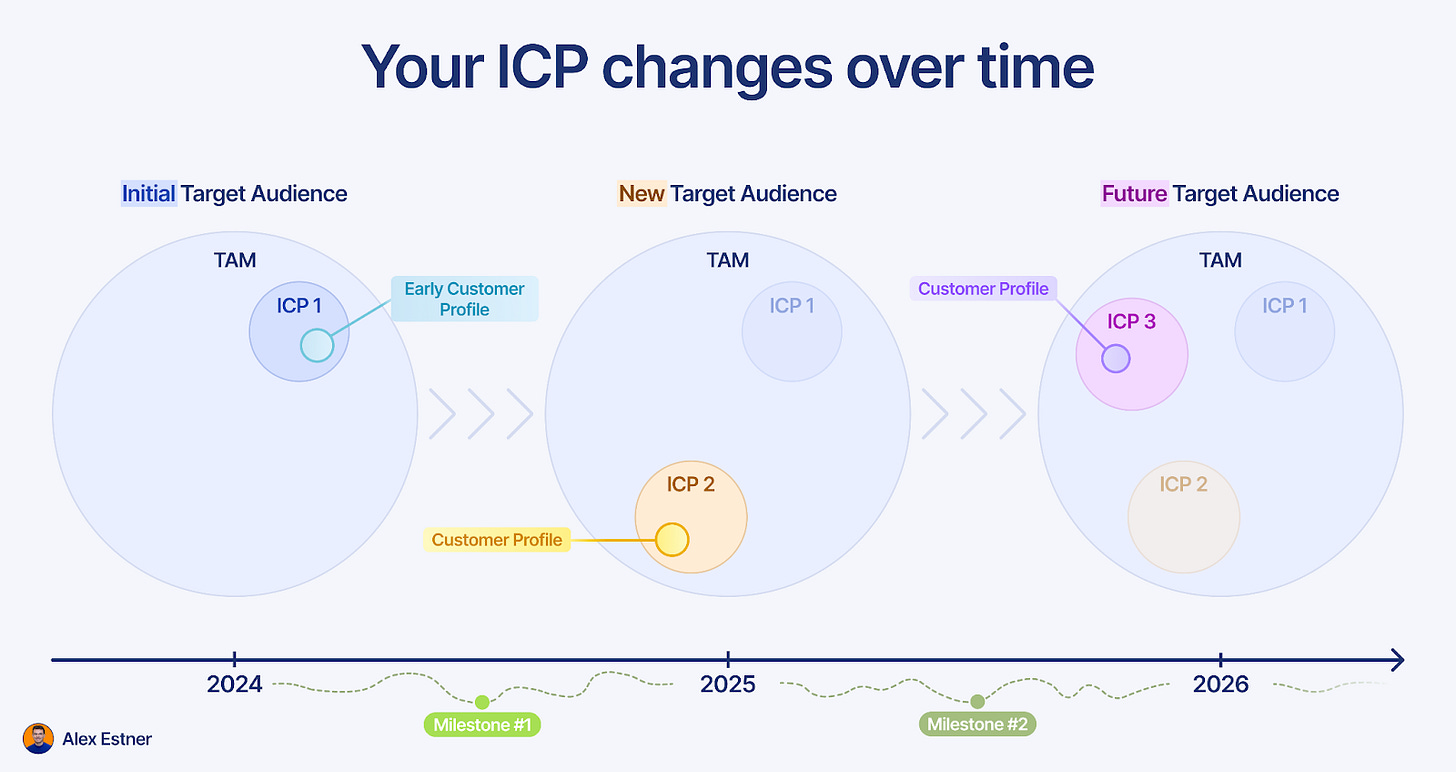10 GTM myths from €0 to €1 million ARR
Most common myths on GTM & how to overcome them.
Hey - it’s Alex!
Today, we cover 10 GTM myths from €0 to €1 million ARR and what you should do instead.
Bonus: List of my vetted Go-to software tools for early-stage SaaS startups
In case you missed the last 3 episodes:
✅ Hiring your first GTM team: 9 common mistakes
✅ Social Listening Guide: Identify high-intent mentions to grow your SaaS
✅ 4 Allbound Playbook to Generate Pipeline in 2025
A quick word from our sponsors
📢 Ahrefs— Looking for a Google Analytics 4 alternative?
Ahrefs’ Web Analytics provides a simple and free solution to track and report website’s traffic. No cookies. No personal data collected. Just the metrics you need. It's also free.
📢 Emlen— The intuitive Buyer Experience Solution for modern B2B sales teams
Your GTM is only as good as your Buyer Experience. Buyers don’t remember your product. They remember how buying from you felt.
emlen helps B2B teams create seamless, personalized Buyer Experiences - from first touch to closed deal.
Want to reach 4500+ early-stage SaaS founders/leaders? Sponsor the next newsletter.
Over the last 3+ years, I’ve been helping SaaS founders build their GTM foundation on their journey from €0 to €1 million ARR.
I worked with 20+ founders, have been a part of 3 B2B startups myself, and talked to 150+ founders and GTM leaders, so I've heard a lot about GTM.
Including a lot of myths about GTM for early-stage SaaS.
So I’ve decided to write a newsletter about the 10 most common GTM myths.
10 Common GTM Myths of Early-Stage Founders
Here are 10 GTM myths I hear a lot from founders on their way to 1€ million ARR.
❌ Myth #1: Our ICP are ‘companies with 1-100€ million revenue’ - so everyone
Skip the FOMO. Start with early customers.
In the early days, you usually don’t have the resources to serve everyone.
Start with initial customers (beachhead segment) and then scale from there.
And also remember, your TAM is not your ideal customer profile. Especially if you’re VC-funded and talk a lot about the HUGE market, it’s a common mistake.
Your TAM is something you will (eventually) win in 5+ years, but not today.
You will have multiple different ICPs over time.
The 'ideal' customers in the 0 to 100k € is different than your 'ideal' customers from 1€ million to 5€ million etc.
So live with the fact that your ICPs will change over time.
Think about it this way: Your ICP today brings you to your next milestone.
Once you hit the next milestone, you can revisit your ICP.
💡Action step: Analyze your initial customers and map their Ideal Personas (User + Buyer) and Ideal Company. Use this framework to build your ICP.
❌ Myth #2: Our product is all-in-one
Founders face this dilemma in the early days.
"Should I build everything for everyone from the start, or take it one use-case at a time and scale it at the next stage?"
Investors specifically love an all-in-one vision for a product, and it is appealing too!
They want to become this mega tool where their customers can:
Have all their data,
Manage all workflows
Have multiple use-cases
❌ But it's not the best way to enter a market.
Instead,
✅ Identify a subsegment of the market that you want to cater to.
✅ Find 1-2 most appealing use-cases for them.
✅ Build just those use-cases to start with.
So instead of being the ‘all-in-one’ from day 1, focus on 1-2 essential features that your customers need, and then diversifying as you scale.
💡Action step: Figure out what is most needed for your ICP. Focus on solving and scaling that first, before you move on to add other products/use-cases.
❌ Myth #3: We just hired a sales agency to fix sales
Founder sales BEFORE outsourced sales.
It’s the founders’ job to win your first clients, find patterns, iterate, and build the first version of GTM.
Don’t hire a sales agency or sales consultant to do this early for you.
YOU need to build a GTM playbook first.
They can ‘scale’ what works, but they don’t build a message-market fit for you.
Once you have found something that works, you can add more resources.
💡Action step: Step into the trenches and do your first few sales. Only when you need more capacity can you hire someone who helps you sell (but not replaces you).
❌ Myth #4: My prospects want to see all features, that’s why I demo all features
I’m shadowing a lot of sales demos. And it happens a lot that instead of a demo, I see more of a product training.
Demo is NOT a product training.
As a founder, it’s tempting to show everything your product can do. But you need to keep the engagement high and get a 2-way conversation.
So focus on your top 3-4 features, the ones that matter to them.
💡Action step: Focus on the most important pain points of your prospect and show them only the features that can solve these. Read Ultimate SaaS Product Demo Guide.
❌ Myth #5: We do all channels at the same time - Outbound, Content, PPC, SEO, Events, Affiliates…
Each channel works differently, takes time to master, and takes up resources. And resources are limited at an early stage.
So instead, focus on 2-3 channels max - better only 1-2 channels. Do more of what works.
💡Action step: Do smaller tests to figure out which channels work and go all in on just those.
❌ Myth #6: We don’t have any competition
I’m 100% sure that this is NOT true. Every company has competition.
You just need to identify your competition from a customer perspective.
Your competition does not always have to be direct. It can be indirect (alternative solutions) or status quo, too. In fact, a lot of the time it’s the status quo.
I like to separate between 3 types of competition.
1️⃣ The DIRECT competition
Those are companies, that do the same.
2️⃣ The INDIRECT competition
Also referred to as alternative solutions. There are other ways you can achieve the same result/ fix the problem, including Excel, manual work, hiring someone, or patching together non-purpose tools
—> Check out April Dunford’s Positioning book to learn more about it.
3️⃣ Status Quo
NOT DOING ANYTHING. Prospects stick to what they do right now.
💡Action step: Talk to potential customers and identify your competitors - you always have competition.
❌ Myth #7: We only lose deals because we are too expensive
This is hardly ever the case. Most startups undercharge.
But if you track your ‘lost reasons’ and this still comes up as a top reason, chances are that the prospect did not experience full value from the product.
So when I hear this from founders, I try to understand 2 things:
1️⃣ Do you track your lost reasons properly?
2️⃣ Are you sure it’s a pricing issue or rather that you’re not delivering enough value?
💡Action step: Track lost reasons properly, make sure to always ask for the ‘real’ reasons, and work on your value proposition.
❌ Myth #8: My product sells itself, I don’t need marketing/sales
To be honest, I hear this one less and less, but it’s still something I hear more than once a month.
It’s especially true for technical founders building a PLG product.
You can have the best product in the world, but if nobody knows about it, how will it sell?
If they don’t know you exist, they won’t be able to buy.
You need to use marketing and sales to tell your ICP how your product will enable them to do things that they could not do before.
So every SaaS company needs marketing & sales. The only things they change are the ‘how’ - like what channels, what messaging, etc.
💡Action step: I’m sorry to tell you, but you will have to learn how to market and sell your product. 🤠
❌ Myth #9: Our GTM strategy is Google Ads & Influencer campaigns
GTM strategy first. THEN growth tactics. These are all growth tactics - ways to execute your GTM strategy.
It might be true that this channel could work for you.
But they only work if you know your:
✅ Ideal Customer Profile
✅ Positioning
✅ Messaging & Value Proposition
✅ Pricing
✅ Sales Process
And this is: Your GTM strategy.
For your GTM motion to work, you need to build your strategy first, then focus on tactics.
💡Action step: Get clarity on your GTM foundations like ICP, positioning, messaging & value proposition, pricing, and sales process.
❌ Myth #10: We have first beta customers, now we want to ‘scale’.
The €0 to 1€ million ARR phase is not 1 phase - it’s rather (at least) 3 different stages.
So when founders tell me they have a handful of clients and now want to scale, I tell them this is the wrong approach.
Scaling comes after you have found repeatable and predictable growth.
So instead of looking for scale from day 1, take it step by step.
P.S. The next newsletter will be about building your GTM foundation in Stage 1 and Stage 2.
❌ Bonus Myth: Your GTM Advisory is probably not very hands-on and actionable
I hear this concern in about 20% of my sales calls from founders who want my support in building their GTM foundation.
And I get it. You don’t want any ‘corporate advisory’ - you need actionable, hands-on support. Someone who’s in the trenches with you.
How I see our roles:
I act as your GTM co-pilot,
But you, the founder, are the pilot.
This means:
I guide you hands-on on what to do next and how (Drafting, reviewing, sharing best practices & templates)
You own the operations (talking to clients, writing emails, building your website…)
We run bi-weekly GTM sprints with clear action items. You get templates and best practices, and I review everything you do. I’m in the trenches together with you.
So yes, my GTM advisory is very hands-on and actionable. I help you to do the right things at the right time, keep you accountable, and reduce trial and error.
But I’m not ‘operational’. That’s the job of the founder(s).
💡Action step: Book a free intro call to learn how we can build and execute your GTM foundations in my 1-on-1 GTM advisory.
Now you know the 10 most common GTM myths for early-stage SaaS founders.
✉️ Hit reply and let me know your top GTM myth.
Happy growth 🚀
3 ways I can help you grow your SaaS to €1 million ARR 👇
1️⃣ Build your SaaS GTM strategy with my free Workbook (helped 5000+ SaaS leaders)
2️⃣ Get access to 100+ actionable SaaS growth tactics (helped 250+ SaaS leaders)
3️⃣ Work 1-on-1 with me - GTM Advisory for SaaS founders from 0€ to €1 million ARR









